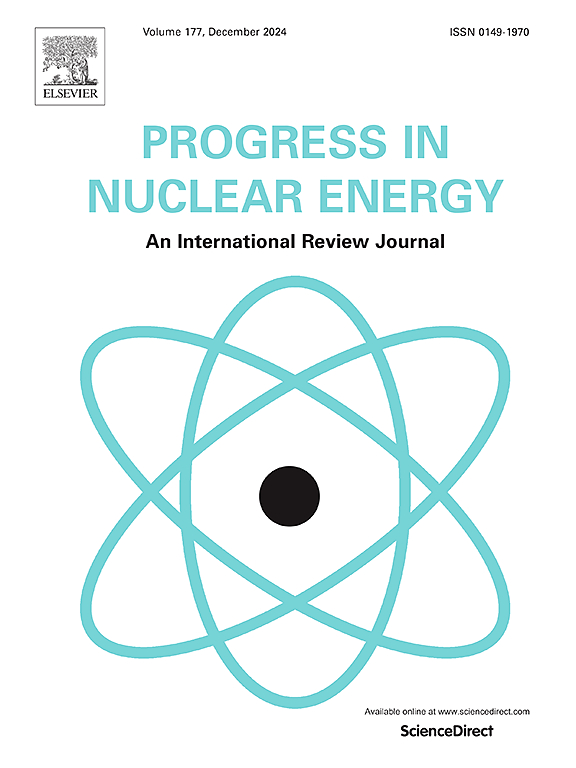Experimental study on polydisperse aerosol removal under multi-parameter spray conditions in containment
IF 3.3
3区 工程技术
Q1 NUCLEAR SCIENCE & TECHNOLOGY
引用次数: 0
Abstract
After LOCA and SGTR accidents in pressurized water reactors, the containment spray system plays a crucial role in mitigating the release of radioactive aerosols suspended in the containment atmosphere. However, for submicron particles with diameters in the range of 0.1–1 μm, the spray removal mechanism exhibits significantly lower collection efficiencies. Investigating the effects of spray characteristics on the minimum attenuation particle size of various submicron aerosol species under severe accident conditions is crucial for effective severe accident management. Based on the Facility for Aerosol Behavior and Containment Spray (FABCS), an experimental study was conducted on polydisperse, multi-species submicron aerosol particles. The results showed that the minimum attenuation particle size for submicron aerosols ranged from 0.2 to 0.5 μm and decreased with higher spray flow rates. For multi-component aerosols, this size varied with the count median diameter. Increased spray droplet velocity and smaller droplet size raised Stokes numbers, enhancing inertial impaction. Higher gas-phase temperatures increased the aerosol removal rate due to thermophoresis. This study offers crucial data for predicting the minimum attenuation particle size of multicomponent submicron aerosols, aiding severe accident management.
求助全文
约1分钟内获得全文
求助全文
来源期刊

Progress in Nuclear Energy
工程技术-核科学技术
CiteScore
5.30
自引率
14.80%
发文量
331
审稿时长
3.5 months
期刊介绍:
Progress in Nuclear Energy is an international review journal covering all aspects of nuclear science and engineering. In keeping with the maturity of nuclear power, articles on safety, siting and environmental problems are encouraged, as are those associated with economics and fuel management. However, basic physics and engineering will remain an important aspect of the editorial policy. Articles published are either of a review nature or present new material in more depth. They are aimed at researchers and technically-oriented managers working in the nuclear energy field.
Please note the following:
1) PNE seeks high quality research papers which are medium to long in length. Short research papers should be submitted to the journal Annals in Nuclear Energy.
2) PNE reserves the right to reject papers which are based solely on routine application of computer codes used to produce reactor designs or explain existing reactor phenomena. Such papers, although worthy, are best left as laboratory reports whereas Progress in Nuclear Energy seeks papers of originality, which are archival in nature, in the fields of mathematical and experimental nuclear technology, including fission, fusion (blanket physics, radiation damage), safety, materials aspects, economics, etc.
3) Review papers, which may occasionally be invited, are particularly sought by the journal in these fields.
 求助内容:
求助内容: 应助结果提醒方式:
应助结果提醒方式:


